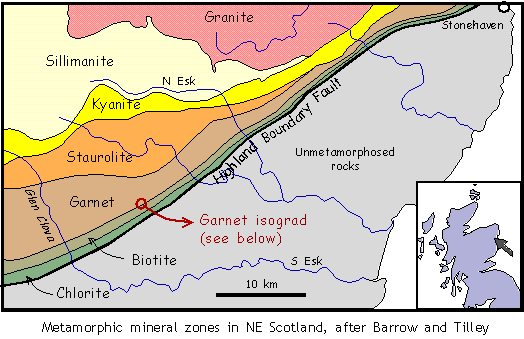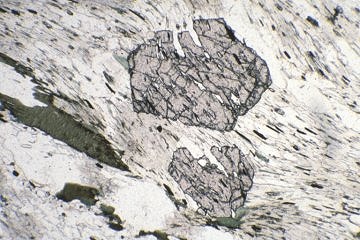Microstructures of Metamorphic Rocks
Isograds and chemical reactions in regional metamorphism

Metamorphism involves the growth of new minerals in response to changes in temperature and pressure. More than a hundred years ago, in this classic area of the Scottish Highlands, George Barrow mapped a series of zones representing increasing grade of metamorphism, each characterised by a particular index mineral not found in the preceding zone. In the 1920's, C. E. Tilley recognised that an isograd, the line on the ground marking the first appearance of an index mineral, reflects a chemical reaction which took place at specific temperature and pressure conditions within the earth.
For example, the garnet isograd in the Scottish Highlands results from the reaction
chlorite + muscovite + quartz = garnet + biotite + H2O
Chemically, this can be expressed as
(Mg,Fe)5Al2Si3O10(OH)8 + KAl3Si3O10(OH)2 + SiO2 =
(Fe,Mg)3Al2Si3O12 + K(Fe,Mg)3AlSi3O10(OH)2 + H2O
Whereas the original sedimentary rocks are fine grained, the new minerals formed in these reactions tend to form much larger isolated crystals, or porphyroblasts.
 |
| Garnet porphyroblasts 1 - 2 mm in diameter in mica schist from the garnet zone of the Scottish Highlands. |